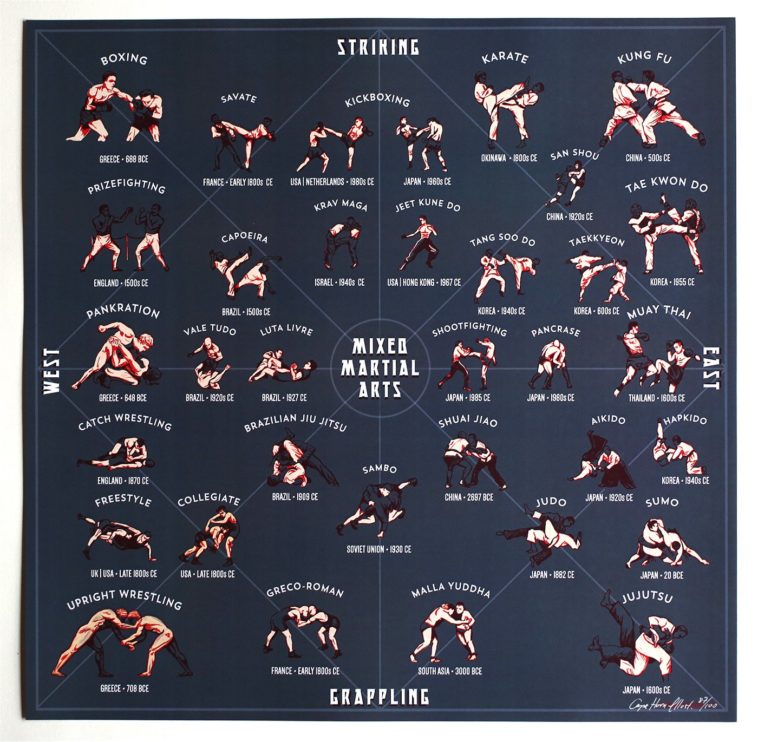What Are The Vital Contrasts In Between The Technique Highlighted In Standard Martial Arts And The Competitors Emphasis Of Modern Fight Sports? Find Out Exactly How These Differences Can Influence Your Journey
What Are The Vital Contrasts In Between The Technique Highlighted In Standard Martial Arts And The Competitors Emphasis Of Modern Fight Sports? Find Out Exactly How These Differences Can Influence Your Journey
Blog Article
Article Writer-Camp Finnegan
When you think about martial arts, do you lean much more toward the standard methods or the contemporary battle sporting activities? Each course offers one-of-a-kind advantages and experiences, formed by their philosophies and training techniques. Typical martial arts stress individual growth and technique, while modern-day fight sporting activities concentrate on competition and performance. Recognizing these distinctions can guide you in picking the right strategy for your trip. But how do martial arts aylesbury show up in training and approach?
The Approach and History Behind Conventional Martial arts
While lots of people link martial arts with physical battle, the ideology and background behind standard martial arts run much deeper. You'll find that these disciplines highlight individual growth, discipline, and respect.
Originating from ancient methods, standard martial arts were commonly developed for Self-Defense and spiritual advancement. https://bloodyelbow.com/2023/08/03/wtf-no-touch-martial-arts/ embody concepts such as balance, harmony, and self-discipline, assisting specialists past plain fighting skills.
As you educate, you'll not just find out strategies but additionally gain insights right into the society and worths that shaped these arts. The routines and practices, commonly passed down with generations, promote a feeling of area and belonging.
The Affordable Nature of Modern Battle Sports
Modern battle sporting activities have actually changed the landscape of martial arts right into an extremely competitive arena, where professional athletes face off in a test of ability, technique, and endurance.
You'll observe that competitions are often organized with rigorous policies and guidelines, guaranteeing fair play and safety. These events bring in big audiences, fueling the excitement and intensity of competitions.
Athletes train rigorously, not just for physical prowess however also for psychological strength, understanding that every information counts in the ring. The adrenaline rush during competitions is apparent, as boxers press their restrictions to declare triumph.
Fans value the athleticism and creativity involved, making modern fight sports a thrilling phenomenon that continues to advance and captivate fanatics all over the world.
Training Approaches and Strategies: A Comparative Evaluation
The competitive atmosphere of contemporary fight sports demands cutting-edge training methods that vary substantially from conventional martial arts.
In contemporary training, you'll concentrate on certain techniques, sparring, and conditioning, frequently using drills that imitate genuine fight scenarios. You'll see an emphasis on measurable performance and regular competitors to evaluate your abilities.
In contrast, traditional martial arts focus on types, katas, and philosophical teachings, typically highlighting self-control and respect over competitors.
Training is normally less intense and may entail recurring practice instead of real-time sparring.
While both approaches develop ability and fitness, modern-day combat sports supply a much more vibrant and versatile training setting, preparing you for immediate challenges in the ring or cage.
Choose the path that aligns with your objectives and interests.
Conclusion
In picking in between typical martial arts and modern-day fight sporting activities, it truly boils down to what you value a lot of. If you're seeking individual growth, technique, and a feeling of neighborhood, conventional arts could be your ideal fit. But if you thrive on competitors and real-time difficulties, modern fight sports could be the means to go. Ultimately, both paths use unique benefits, so it's all about straightening your training with your individual objectives and rate of interests.
